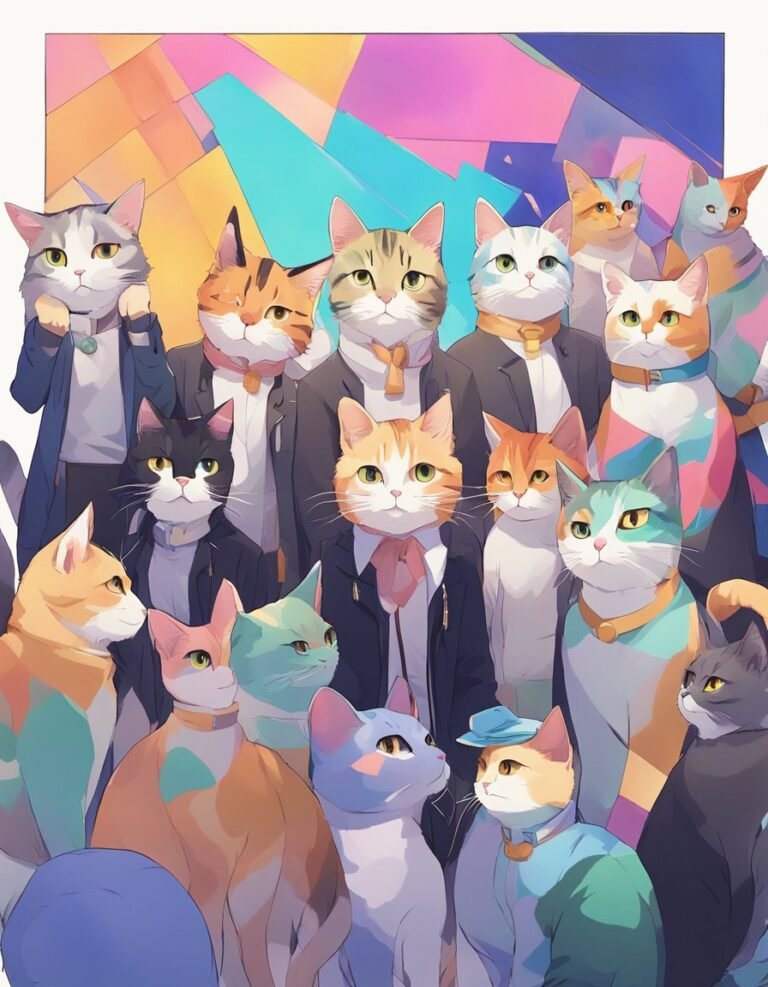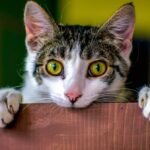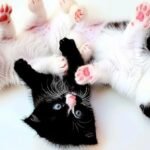Feline Art Critics: Kitty Opinions on the Latest Gallery Exhibits

You stroll into an art gallery, expecting the usual crowd of enthusiasts and scholars, but instead, you’re greeted by a purring audience of four-legged art critics.
Yes, cats.
It might sound like a quirky dream, but think about it — cats have been revered in art for centuries, taking center stage in countless paintings and sculptures.
They’ve been mysterious muses in ancient Egypt, sly symbols of domesticity in Dutch Golden Age art, and they even rule social media today with their own brand of indifferent charm.

Imagine a fluffy critic, perched next to a masterpiece, offering a nonchalant glance that seems to penetrate the very soul of the painting.
Is it indifference or a cryptic critique? Cats command attention, whether they’re aloofly sprawled across your keyboard or stealthily stalking through a gallery.
Their presence in the space between art and viewers adds an unexpected layer to the experience, and their discerning ‘meows’ might just be the review an artist is looking for.
Social media has amplified our love affair with felines and fused it with the art world, creating viral sensations out of cats interacting with art.
Picture sharing platforms brim with photos and videos of cats eyeing paintings, though whether they’re admiring the brushwork or contemplating a pounce is up for debate.
Their unpredictable behavior makes for entertaining content that captures hearts and laughter, showing that perhaps every artist needs a cat in their gallery — if not for their critiques, at least for the cuddles and the clicks.
The Historical Pawprint of Feline Art

Felines have left their indelible paw prints on the annals of art history, with representations ranging from sacred depictions to intimate portraiture.
Ancient Whiskers on Canvas
The ancient Egyptians revered cats to the extent of immortalizing them in their art.
These graceful creatures held a sacred status and were often depicted in ancient Egyptian tomb art, symbolizing protection and divine sponsorship.
Portraiture of the time not only showed the spiritual importance of the tabby but also served as a testament to the animal’s close relationship with humans.
Purr-spectives from the East
Moving eastward, Chinese painters infused their artwork with the delicate and supernatural imagery of cats.
These artists appreciated the cat’s subtlety and the way their mysterious persona could enhance the depth of a scene.
The Maneki-neko, or “beckoning cat”, emerges throughout many artworks as an icon of good luck and prosperity, deeply rooted in the Purr-spective from the East.
The portrayal of cats by these painters has set a precedent that influenced the history of feline art, marking the animal’s significance across cultures and timelines.
Modern Cat Art and Its Influence

The realm of modern cat art extends beyond the canvas, influencing both social media and contemporary art spaces with a unique blend of creativity and feline grace.
Cat-stagram: Felines in Social Media
Encountering a cat on your social feed is as common as a selfie.
Platforms like Facebook have become galleries for pet owners to showcase their cats, transforming them into social media stars.
You’ve seen the rise of celebrity cats, with dedicated Instagram profiles featuring thousands of followers.
Their daily antics, captured in quirky photos and engaging video compilations, tell a story that often parallels human experiences, establishing a deep connection with audiences.
Contemporary Claws on the Canvas
Stepping into a contemporary art gallery, you might find the elegant lines and bold forms of cats represented by artists inspired by their pets. Jeff Koons, with his reflective sculptures, is an example of an artist whose work resonates with a pop culture that adores cats.
The whimsy and satire of feline-inspired art often mirror modern attitudes and social commentary, securing spots for such pieces in major art exhibitions and galleries.
These venues not only display creativity but also start conversations about the integration of animal imagery in modern expression.






